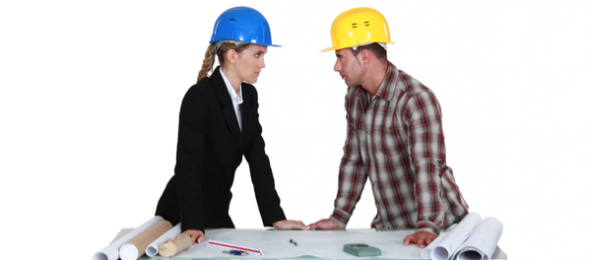Professor Stipanowich has recently completed another article for The Construction Lawyer titled Managing Construction Conflict: Unfinished Revolution, Continuing Evolution which discusses the evolution of different dispute resolution methods in the construction industry. While his paper focuses on the evolution of these methods in the construction industry, several of his findings are also indicative of trends in ADR evolution more generally. In the following days we will be highlighting the different parts of his paper so stay tuned for more info on Managing Construction Conflict: Unfinished Revolution, Continuing Evolution.
In part I of his article, Professor Stipanowich focuses on the initiatives explored towards the last decade of the Twentieth Century to tackle the roots of construction conflicts and avoid the progression of the dispute towards massive arbitration or litigation proceedings that led to significant economic, business and relational costs. Professor Stipanowich states,
Suddenly it seemed everyone was exploring and proposing solutions to the construction industry’s crisis. These included initiatives focused on tackling the roots of construction conflict and promoting jobsite collaboration, including partnering and contract terms to more thoughtfully allocate risk and incentivize collaboration. There were new “real time” analogues to the old short and informal arbitration proceedings such as dispute review boards and adjudication. Finally, there were proposals for phased handling of disputes through successive “sieves”—unassisted negotiation, followed (if necessary) by mediation and, finally, binding arbitration.
He goes on to explain the different methods that promoted jobsite collaboration:
Partnering. A concept borrowed from the manufacturing and distribution sectors and pioneered by the U.S. Army Corps of Engineers, partnering was designed to encourage collaboration and team work by deliberate early efforts to create an atmosphere of trust and cooperation on projects. Facilitated partnering workshops were commonly conducted shortly after contract signing and attended by owner representatives and key members of the design and construction team. The aim was stronger individual bonds, better understanding of each other’s objectives and expectations, and non-adversarial approaches for resolving problems on the job. Surveyed contractors saw partnering as a superior means of reducing dispute-related time and cost, enhancing understanding, opening channels of communication and preserving job relationships; the large majority of contractors expected its usage to grow.
Relational contracting. New attention to the causes of conflict on construction projects also centered on contract terms, including provisions for more equitable and efficient allocation of risks on construction projects. Other efforts focused on contractual incentives aimed at aligning contractors’ goals with those of owners, thereby promoting collaboration.
He then discusses the “real time” analogues to the old short and informal arbitration proceedings starting with dispute review boards:
Dispute review boards, adjudication. Reclaiming some of the territory once served by informal arbitration as an efficient mechanism for resolving jobsite disputes, the dispute review board (DRB) evolved as a short, sharp method for independent expert evaluation of disputes on infrastructure projects and large engineered jobs. The concept involved the establishment of a standing panel of construction and engineering experts to periodically convene on site to review, and render summary nonbinding opinions on, disputes regarding subsurface conditions and other issues. The idea was that the standing and expertise of the decision makers would stimulate a quick settlement of the dispute, avoid prolonged conflict and obviate traditional binding arbitration or litigation.
Professor Stipanowich notes that “the DRB’s British analogue was ‘statutory adjudication.’” The review and decision-making procedure was very quick and “under the law the adjudicator’s determination was only preliminarily binding, and the dispute could later be taken to binding arbitration or litigation.
He also gives an example of dynamic conflict management through the use of a dispute resolution adviser, a construction expert with dispute resolution skills who would remain throughout the project.
Lastly, Professor Stipanowich discusses the components of phased handling of disputes through a tiered process: mediation and arbitration. He notes that
In a 1991 Forum survey, construction attorneys registered generally positive attitudes toward mediation and saw it as appropriate for the maintenance of business relationships, promoting privacy and confidentiality, resolving disputes quickly and economically, providing an objective perspective on a case, overcoming impasses and dealing with strong emotions. Presaging future developments, a slight majority thought it would be appropriate for standardized construction contracts to provide for mediation prior to arbitration or litigation of disputes involving large sums of money.
Professor Stipanowich comments that while arbitration had been the “time-honored mechanism” for informal adjudication in construction disputes, it was becoming increasingly like litigation. He also notes that “concerns regarding the quality of arbitrators fed into support for broader judicial review of awards, for reasoned awards, and generalized dissatisfaction with all aspects of arbitration.” He states that “attorneys also expressed concerns regarding the differing needs of small and large cases and tended to support procedural reforms such as the use of preliminary hearings to arrange for discovery, for the narrowing of issues and establishing a schedule; mechanisms for joinder of parties or consolidation of hearings; and arbitrator supervision of document discovery.”
He explains that the AAA’s National Construction Dispute Resolution Committee responded to such concerns in the mid 1990s by modifying the Construction Industry Rules to create “‘tiers’ of arbitration procedures for construction disputes of varying size and complexity, including expedited procedures formulated for low-dollar-value cases and more extensive process for so-called ‘large, complex’ cases. The AAA also pared down its national rosters of neutrals and established stricter experiential and training requirements for arbitrators.”
Read the summary of part II
Read the summary of part III
For more information, please read Professor Stipanowich’s full article.














